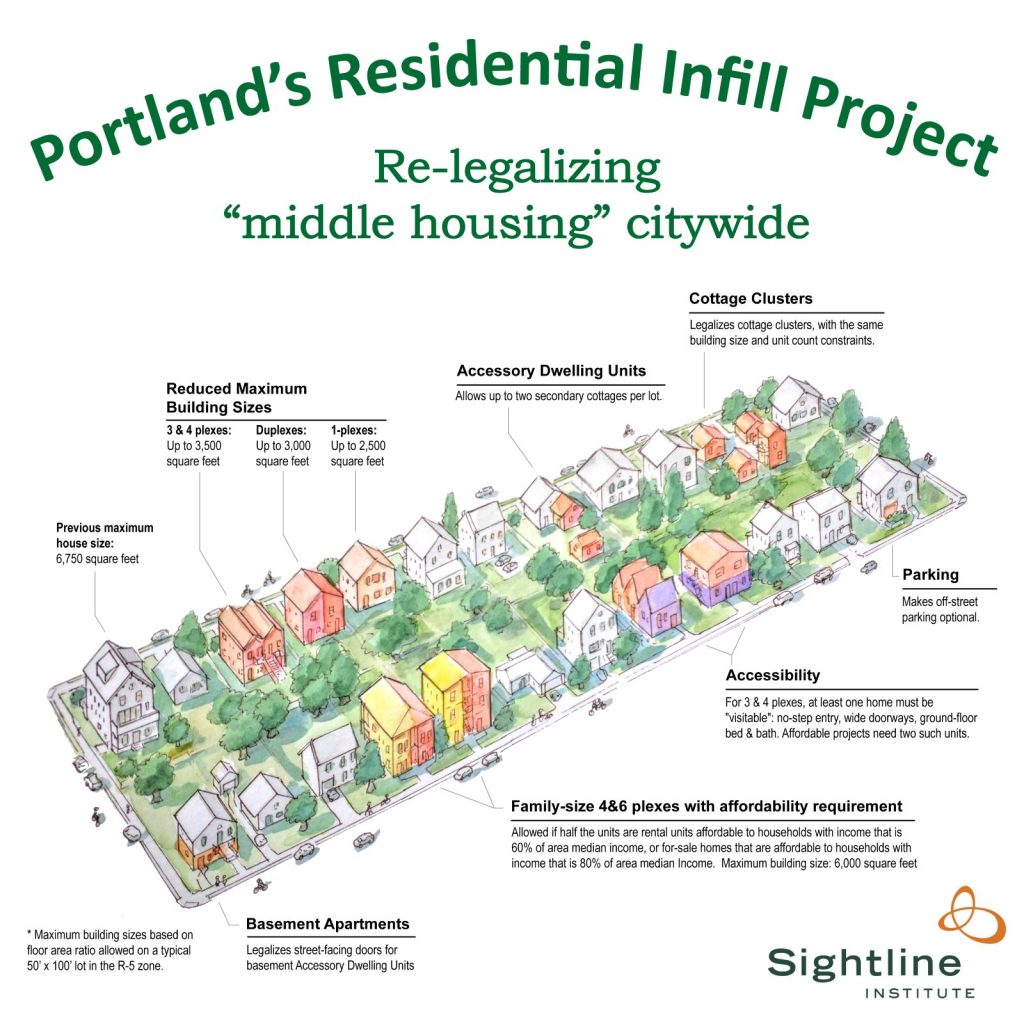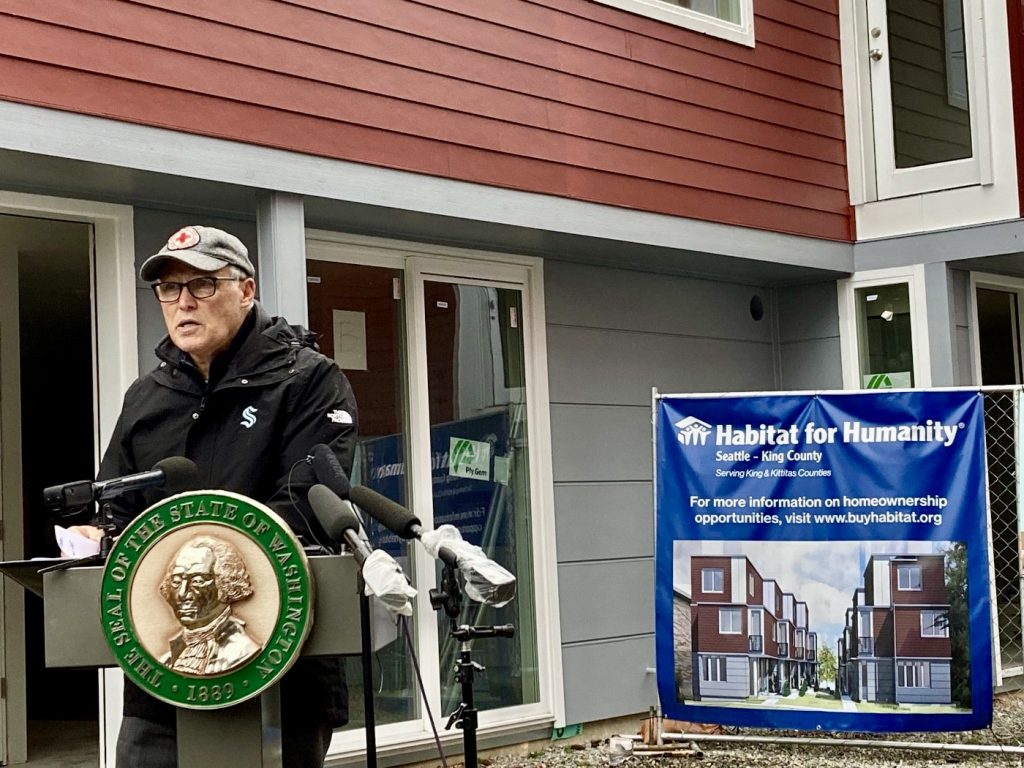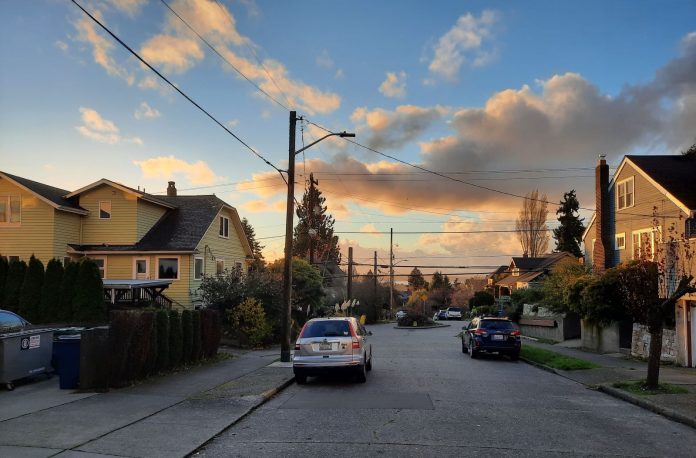The Seattle Times editorial board has long been a foe of housing diversity and density, and they proved that yet again yesterday. The editorial board, which represents the state’s largest newspaper, came out against legislation seeking to reform single-family zoning statewide. Desperate to derail housing reform efforts, the cranks at The Seattle Times deployed an armada of half-truths, red herrings, and misleading points to plead their case.
Representative Jessica Bateman (D-Olympia) is lead sponsor of House Bill 1782 and rallying support in the House. She has already corralled 28 representatives to cosponsor the bill, aided by the backing of Governor Jay Inslee, who requested the bill and included it in his housing and homelessness plan.
The Urbanist covered HB 1782 earlier this month; in short, the bill would would apply to cities planning under the Growth Management Act and allow missing middle housing more broadly, including:
- In cities of 10,000 residents or more, duplexes would be allowed on every lot that a single-family home is;
- In cities of 20,000 residents or more, all lots allowing single-family homes would also need to allow triplexes and fourplexes; and
- In cities of 20,000 residents or more, all lots allowing single-family homes within a half-mile of a major transit stop would also need to allow fiveplexes and sixplexes, which could be arranged as stacked flats, townhouses, or courtyard apartments.
However, cities can seek to opt out of the citywide provision if they produce an alternate plan that achieves the prescribed minimum average density citywide. There is no opt-out option for residential lots within a half-mile of major transit, which the bill defines as a bus stop with 15-minute-or-better frequencies at peak travel periods or a variety of other transit stops (e.g., light rail, commuter rail, streetcar, or ferry).
It’s a fairly sweeping bill for a staid American city, which is why The Seattle Times is so up in arms. Their editorial throws everything but the kitchen sink at the idea, but the fact remains it’s a long overdue commonsense step to provide more affordable housing options in a state sorely lacking them. Housing prices are skyrocketing at an alarming rate. This is not just a Seattle problem. It’s statewide.
The average detached single-family home price in Bellevue is $1.36 million, which is up 23% in one year. Bothell is up 33% surpassing $947,000. Average home prices in Vancouver are up 23% in one year and approaching half a million. Spokane’s average home price is up 28% in one year. Bellingham’s home prices are up 25% and are north of $636,000. Olympia is up 24% and above $500,000 for the first time ever. Suffice it to say, median household incomes did not see the same dramatic rises last year. Households across the state are struggling to make rent or make the increasingly daunting leap into homeownership.
Seattle saw slower home price growth at 12% (which is still way too high) and surpassed $900,000 for the first time ever in Zillow’s average price index. We are headed in the direction of a city dominated by million-dollar homes, which is already the reality for much of the Eastside, not to mention much of California. All across the state, people who don’t make six figures are getting pushed farther and farther out from the communities where they have built social networks and livelihoods in. Is this the kind of state we want to be?
The Seattle Times editorial board’s criticisms are small and petty next to the scale of the housing crisis. Relying on anecdote and meanderings from Rep. Gerry Pollet (D-Seattle), the editorial board claims they’re worried the new sixplexes and fourplexes won’t be affordable. But it is already clear that single-family homes currently being built, refurbished, or flipped in their place certainly aren’t. Housing data consistently shows detached single-family homes are the most expensive housing type and yet most cities mandate them on three-fourths of their residential land or more, which is the case in Seattle, Bellevue, and so on.

Townhomes and courtyard apartments are consistently cheaper housing options, and renting the latter doesn’t require a down payment, which is a massive barrier to entry for millions of people in this state who are not lucky enough to be sitting on a big pile of savings or benefit from generational wealth.
The Seattle Time’s editorial board veers conservative, consistently endorsing Republicans in marquee races — from George W. Bush to Dino Rossi to Ann Davison — yet this Republican-leaning outfit does not believe in markets, let alone math, when it comes to housing.
“Supporters… rely on the premise that increasing housing supply will inevitably lower prices. They believe trickle-down economics will provide everyone housing if there are more housing options for those at or above median income,” they write. “That doesn’t ring true to some in Olympia, and Seattle’s experience with mandating affordable housing tells a different narrative.”
Rather disjointedly, they strain to connect the statewide zoning reform proposal to Seattle’s Mandatory Housing Affordability (MHA) rezones that were passed from 2017 to 2019, affecting the roughly 10 square miles of the city zoned for multifamily housing. As a mandatory inclusionary zoning program, MHA linked these upzones to affordable housing requirements. The editorial board brands MHA as a failure since most developers are paying into the affordable housing trust fund rather than taking the performance option of producing rent-restricted homes on-site. While increasing on-site MHA performance could be a reasonable objective for tweaking the policy, it hardly makes the whole program a failure. MHA successfully brought in and invested $52.3 million in 2020, and even more in 2021, which then went toward affordable housing investments funded through the Seattle Office of Housing. MHA has indisputably increased affordable housing production, even if The Seattle Times editorial board refuses to admit it.
More importantly, MHA criticisms are a distraction from the merits of the statewide zoning reform bill. MHA is a Seattle-only program. This bill would apply statewide, so long as the city meets the thresholds.

While the state bill doesn’t include affordable housing requirements, it does greatly increase opportunities for nonprofit developers and missing middle homebuilders. One of the top obstacles to building affordable housing is the difficulty and expense of procuring land in red hot markets around the state. This bill would release the pressure valve a bit and open up more land to affordable development. Governor Inslee announced his support for bill at a Habitat for Humanity build site to draw this connection.

Instead of acknowledging this very real obstacle to affordable housing creation, the editorial board resorts to scare tactics. Is allowing sixplexes and fourplexes where formerly only single-family homes went, “trickle down economics” or is it just math and the welcoming of diversity of housing types and the people who live in them?
It’s stunning to see a faux-Marxist analysis being deployed to protect the broad swathes of single-family zoning blanketing the state. The suburban single-family home buoyed by the federally-insured mortgage was American capitalism’s lifeboat facing the rising tide of socialism mid-century. People who own property and owe mortgages were less likely to get swept up in strikes and revolution, the logic went. In retrospect, this was a very effective strategy for pulling American politics to the right. But it was also a recipe for a massive housing crisis in the 21st century as America is running out of land for easy suburban sprawl development and wealth inequality spirals out of control. Older sprawled-out cities are beginning to economically collapse, weighed down by the high maintenance costs of this kind of development and stunted by their lack of diversity.
The most recent editorial is very much on brand for the Seattle Times editorial board, who have resisted attempts to undo exclusionary zoning in the city. For years, they vigorously opposed backyard cottage reform. The editorial board leaked and blocked the citywide single-family zoning reform that Mayor Ed Murray’s Housing Affordability and Livability Agenda (HALA) Committee was mulling back in 2015. Later, even with 94% of single-family zones excluded, the editorial board still opposed the Mandatory Housing Affordability rezones the HALA Committee settled on, fighting them tooth and nail throughout the approval process. In 2020, they opposed JumpStart Seattle package that will fund hundreds of millions in affordable housing investments on an on-going basis. They’ve also consistently opposed tenant protections and rent control, even as the pandemic inflicted huge uncertainty and pain on renters.
The history goes back farther still. The Urbanist‘s Ray Dubicki has documented The Seattle Times history of stoking and profiting off of racial exclusion in the early and mid-20th century. These segregationist housing practices helped drive White flight migrations to many suburban developments around the region. The region’s paper of record ran advertisements for “restricted” Whites-only developments in places like View Ridge and Broadmoor and even covered them glowingly as news items that provided free publicity. The region has never fully grappled with this legacy, nor has the legacy media with their role in it. In fact, the paper of record continues to defend the vestiges of racial and economic exclusion in the form of its hardline single-family zoning preservation stance.
All in all, the Seattle Times editorial board supported none of the major market-based, hybrid, or government-based housing solutions proposed in recent memory. At this point, it’s safe to say housing is just not a priority for them, even as tens of thousands live on the streets and millions are burdened by exorbitant housing costs.
At the end of the day, The Seattle Times editorial board supports status quo housing policy, and that status quo has given us 20% and 30% price jumps in just one year’s time. It’s out of control and unsustainable if we are to be a functioning society. Status quo housing policy is devastating the poor and middle class residents of our state, while landowners get wealthier and wealthier and pull up the drawbridge to the middle class. Seattle Times publisher Frank Blethen should be ashamed. But he’s probably feeling pretty cozy in his rapidly appreciating multi-million-dollar Mercer Island mansion.
Sign our petition to urge your legislators to back HB 1782 and other pro-housing legislation.
Doug Trumm is publisher of The Urbanist. An Urbanist writer since 2015, he dreams of pedestrianizing streets, blanketing the city in bus lanes, and unleashing a mass timber building spree to end the affordable housing shortage and avert our coming climate catastrophe. He graduated from the Evans School of Public Policy and Governance at the University of Washington in 2019. He lives in East Fremont and loves to explore the city on his bike.





